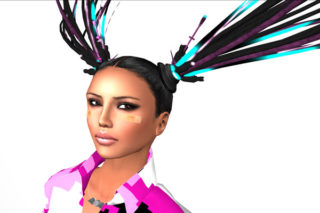Table of Contents
- Introduction
About
Indigenous Futurism Model-Making Competition
Building the Lenape Center
Natural Resources + Government Policy
Mapping + Urbanism + Community
Virtual + Augmented Reality
ISAPD Chapter Kit
AR/VR Tools for Storytelling Event
Join the Indigenous Scholars of Architecture, Planning, and Design (ISAPD) on Wednesday, July 21, 6pm as they plug into the AR/VR world and explore the ways in which these tools can preserve and teach traditional lifeways and imagine the future of communities, all while expanding how these technologies can be applied in architectural practice. A series of projects will be presented that dive into contemporary Indigenous housing, the history of site, and how imagined environments of the future inform how communities are built today.
Presenters:
Skawennati Kanien’kehá:ka (Mohawk), Artist, Co-Founder + Co-Director of Aboriginal Territories in Cyberspace (AbTeC), Co-Founder of daphne artist-run centre
Seth Wenger, Principle Investigator, MAR Yale Divinity School/Public Humanities
YoungJoon Yun, MArch II ’21, Yale School of Architecture
Panelists:
Frank Gesualdi, Associate Principal, Studios Architecture
Dr. Timothy Hsu, Acoustic Modeling, Assistant Professor in Music and Arts Technology (MAT) at Indiana University Purdue University Indianapolis (IUPUI)
Jessica Ryan (Brothertown), Vice-Chair of Tribal Council and Culture Division Chair
Dakota Stipp, Interactive Sound Designer, MFA Yale School of Drama/Sound Design
Summer Sutton (Lumbee), Co-Founder, Indigenous Scholars of Architecture, Planning and Design
Fernando Tirado, Lead 3D Architectural Artist, Studios Architecture
About the Speakers
Skawennati

Skawennati makes art that addresses history, the future, and change from her perspective as an urban Kanien’kehá:ka (Mohawk) woman and as a cyberpunk avatar. Her early adoption of cyberspace as both a location and a medium for her practice has produced groundbreaking projects such as CyberPowWow and TimeTraveller™. She is best known for her machinimas—movies made in virtual environments—but also produces still images, textiles and sculpture.
Her works have been presented in Europe, Oceania, China and across North America in biennials, group exhibitions and solo shows. They are included in the collections of the National Gallery of Canada and the Musée d'art contemporain de Montréal, among others. She was honoured to receive the 2019 Salt Spring National Art Prize Jurors’ Choice Award, a 2020 Smithsonian Artist Research Fellowship and a Visiting Artist Fellowship at the Eccles Centre for American Studies at the British Library. She is represented by ELLEPHANT.
Skawennati has been active in various communities. In the 80s she joined a Montreal-based anti-nuclear peace group, SAGE (Students Against Global Extermination), and the Quebec Native Women’s Association. In the 90s she co-founded Nation to Nation, a First Nations artist collective, while working in and with various Indigenous organizations and artist-run centres, including the Native Friendship Centre of Montreal and Oboro. In 2005, she co-founded Aboriginal Territories in Cyberspace (AbTeC), a research-creation network based at Concordia University whose projects include the Skins workshops on Aboriginal Storytelling and Digital Media as well as the Initiative for Indigenous Futures. Throughout most of the teens, she volunteered extensively for her children’s elementary school, where she also initiated an Indigenous Awareness programme. In 2019, she co-founded centre d’art daphne, Tiohtià:ke/Mooniyang/Montreal’s first Indigenous artist-run centre.
Born in Kahnawà:ke Mohawk Territory, Skawennati belongs to the Turtle clan. She holds a BFA from Concordia University in Montreal, where she resides.
YoungJoon Yun
About The Trickster Tales
This research rejects the current regulations of the built environments. It utilizes a diverse and ever-changing typology in Extended Reality. By virtually projecting various perspectives onto a physical site, this research observes the site with a more comprehensive range of subjective experiences. Like a trickster transforms their form to describe the indigenous world, the study relied on the multiple repertories contingent on different situations. Beyond the human scale, the augmented non-human eyes blur the boundary between physical and digital binaries on top of providing locomotion to every object. Moreover, the different animals’ life patterns and circulation paths around the site weave together to explain multiple relationships. This strategy brings users closer to space to present various forms, scales, and perspectives over time and limitations.
The project observes The Pas from four different animas’ perspectives, deer, muskrat, bird, and wolf. These non-human perspectives based on computation, player simulation, and augmented reality will be a coherent strategy to explore how such technologies will pose a sustainable, scientific, or progressive language for indigenous futurism.